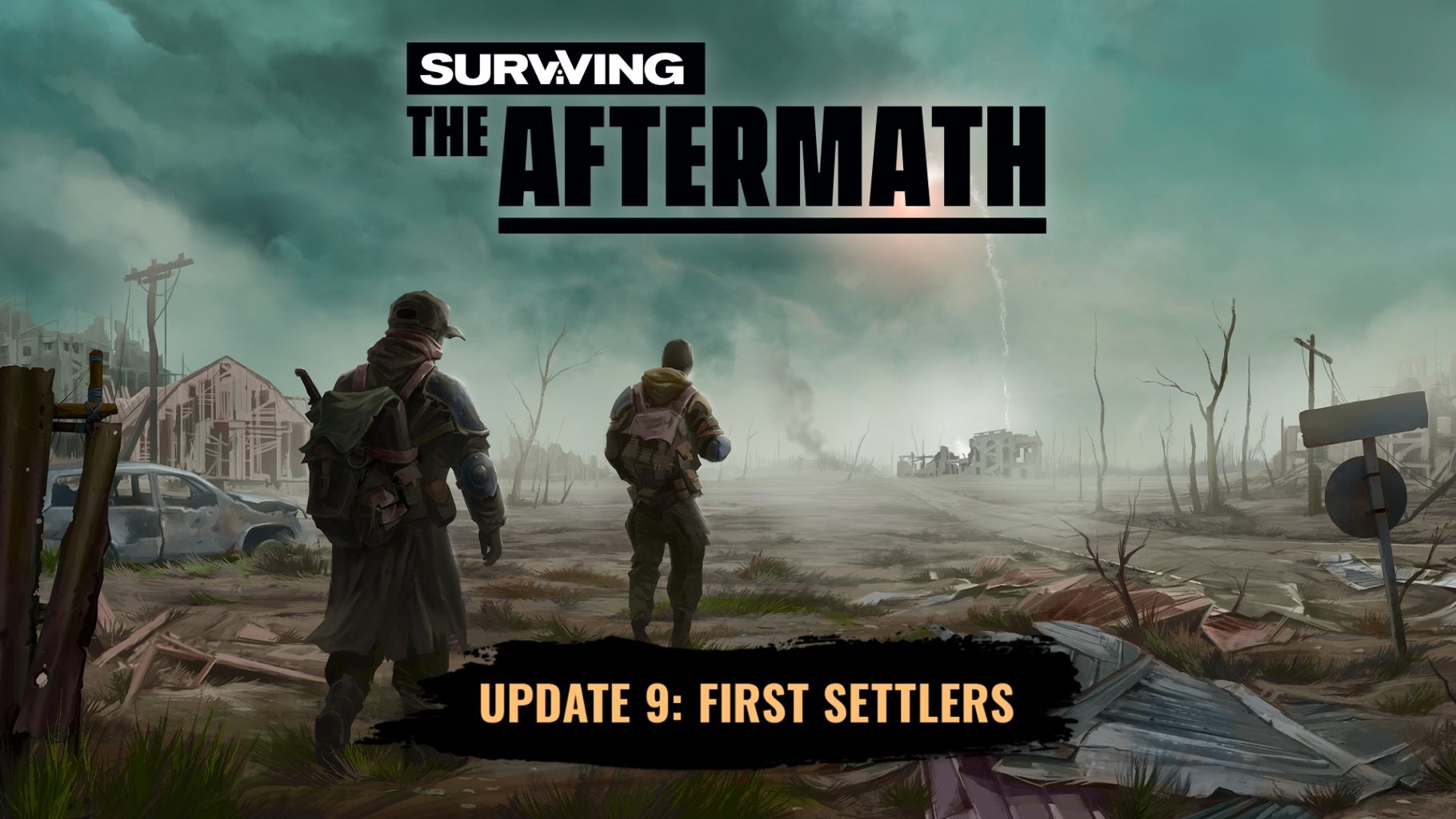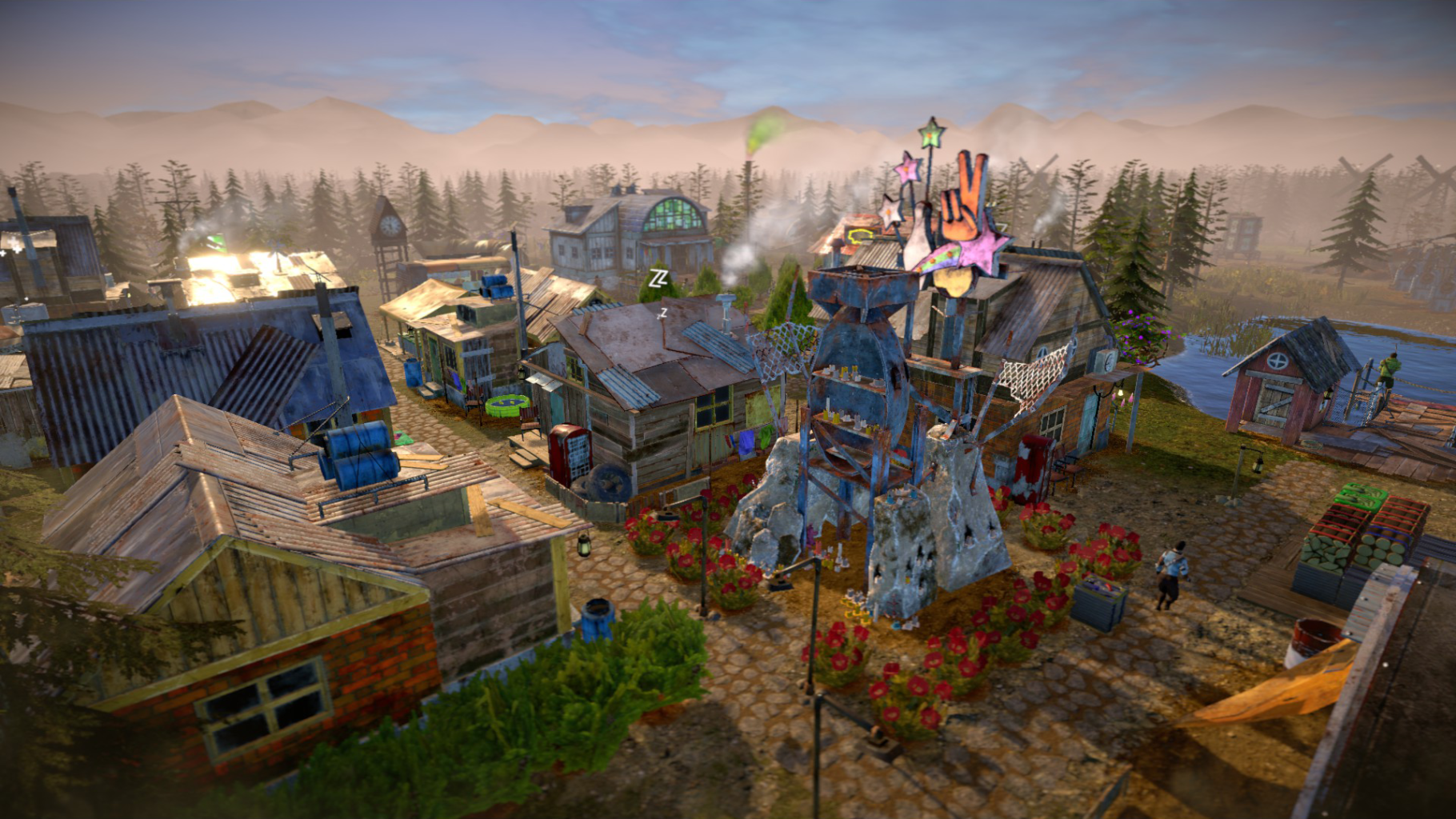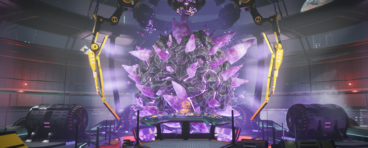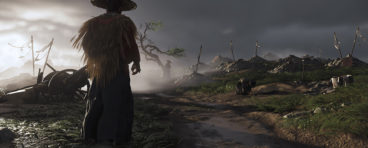
Surviving the Aftermath hat mit Update 9: First Settlers neue Features erhalten. Paradox Interactive und Iceflake Studios erweitern den Aufbaustrategie-Survival-Mix mit neuen Spezialisten und einer neuen Ranch. In dieser können die Kolonisten ab sofort Tiere wie Hühner und Schafe züchten.
Die vollständigen Patchnotes können in englischer Sprache auch auf der offiziellen Webseite nachgelesen werden.
Surviving the Aftermath Update 9 Patchnotes
General
- New start conditions.
- Game starts with specialists only.
- The gameplay starts without colonists or prebuilt buildings.
- Updated pre-game options.
- Select a starting group of specialists in the pre-game.
- Starting resources are adjusted to match the new beginning.
- Specialists can now do the same tasks as colonists.
- Gather resources from small deposits (that won’t require specialized building).
- Build buildings.
- They must be commanded with direct commands to make different actions. Otherwise they concentrate on patrolling around the colony.
- Specialists can’t work in buildings.
- First colonists are invited by building a campsite and shooting a flare from that building’s info panel when you feel ready for it.
- New building called Campsite. Works as a storage to starting resources, but also as a colony center used to call in the first survivors.
- Open ended beginning that allows freely to select the site for the colony and build early game buildings in any order.
- Gate is still required to get access to the world map.
- New progression is introduced to give more freedom in the early game.
- Phase 0 – Find a suitable location with the starting group of specialists and create a campsite in the location where you want to start building the colony. During this phase the only buildable building is the campsite. Building the campsite opens a selection of new building options.
- Phase 1 – Use specialists to prepare the colony by building the most essential buildings and gather essential resources nearby. Calling the colonists to arrive is done by shooting a flare to the sky from the campsite’s building info. This also unlocks new building options. Specialists can be used to prepare the colony and build buildings as long as there are enough resources left, or colonists can be invited immediately after setting up the campsite.
- Phase 2 – The first colonists arrive and the game continues similarly as before with the colonist start. The goal from now on is to build a gate and unlock the access to the world map. Colonists start to work in the buildings and keep the colony running, while specialists can concentrate on defending the colony and exploring the world map at the same time as they help colonists in other tasks.
- Colony events start only after the colonists arrive.
- Ranching is introduced as a new late game food production mechanic.
- Ranching can be exercised in a new building called ‘Ranch’.
- Ranching requires water and workers.
- Four different ranch animals can be grown.
- Cattle grow slowly and require a lot of care, but they also provide a lot of meat.
- Chickens grow fast, but won’t give as much meat.
- Sheep are in between the two and provide fiber as a side product.
- Pigs are a good source for meat, but they don’t have side products.
- Ranch animals can be acquired only from other societies.
- Ranch animals multiply if there are more than two of them in the same ranch.
- Herds can be split to fill another vacant ranch.
- Ranches can also get infected, or polluted killing the animals inside. Treating them requires splitting the herd by sending them into an intact clean ranch. Decontaminating and disinfecting ranch can be done only when they are empty.
- Animals can be butchered for meat manually.
- Ranch being full does not stop reproduction. Excess animals are automatically butchered for meat.

Gameplay
- The camera can now be moved by dragging the screen in different modes, such as the build mode.
- Killed Wild Animals will now turn into food deposits that can be scavenged for meat.
- Resource boxes on the ground now have a tooltip that shows the name of the resource, the amount in the box and their current state of decay.
- Resource boxes left on the ground will eventually decay and become unusable.
- Notifications now have a direct link to the appropriate page in the game’s Help menu that explains the feature related to notification more thoroughly. The help page can be accessed by pressing the question mark icon in the notification box.
- A notification has been added to the game that appears in case a Specialist is killed in the colony.
- The Selection Box has been added to controllers. Players using a controller can now select several Specialists at once.
- The game controller now supports context based cursors.
- Buildings that have reached their production limits should no longer show a floater on top of them for missing workers.
- New tutorials added to the game:
- Specialist Controls
- Setting up the colony
- Prepare Colony
- Basic Gathering
- Hunting
- Sandworms will no longer show the floater when all living entities are highlighted.
- Notifications that have a Help menu entry related to them in the game now show an icon that will open up the entry for more information.
- Fixed issue with energy producing buildings producing too much energy after Magnetic Storms.
- Fixed issue with paused energy consumers producing their own energy after saving and loading.
- Notifications should now show a “Dismiss” prompt if they can be dismissed by right-clicking or by pressing X on the controller.
- Eight new events added to the game.
- Early game buildings in the build menu are unlocked to construction based on the game phase.
Graphics
- Visual improvements to event and survivor group pop ups.
- Fixes to the animations when colonists are carrying resource boxes.
- Updates to the icons that are shown when living entities are highlighted.
- Deposit floaters now spin when they are inside a work area.
- Underground deposits now have support for 3D floaters.
Balancing
- Colonist walking speed outside roads have been slowed down. This makes roads much more important as they ensure smooth logistics inside the colony. Moving on the road is also made slightly faster.
- Specialist walking speed increased. They move now faster than ordinary colonists.
- Walking on a paved road is faster compared to the dirt road. It also takes longer to build paved roads.
- The Aquafarm’s resistance to pollution and amount it generates have both been balanced.
- New options for starting resources can be chosen in the pre-game options. The change is based on the new game start.
- Animals can be now traded from other societies on the world map.
Weitere Informationen zu Surviving the Aftermath könnt ihr jederzeit auch auf der Roadmap entnehmen. Die Entwickler versuchen so transparent an die Entwicklung des Spiels heranzugehen wie nur irgendwie möglich.
Sichert in der Postapokalypse euer Überleben und feiert Erfolge – Ressourcen sind rar, aber es bieten sich neue Chancen. Verhindert Desaster in der Kolonie, schützt eure Kolonisten und zivilisiert eine verwüstete Welt. Denkt dran: Das Ende der Welt ist erst der Anfang.
Surviving the Aftermath ist für den PC über Epic Game Store erhältlich.













